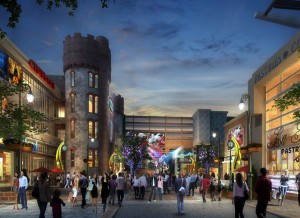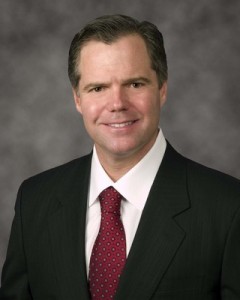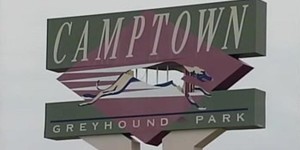 Despite an atmosphere of uncertainty in Massachusetts, executives at MGM Resorts International are putting their faith in a November victory at the ballot box. They’ve closed on the purchase of two tornado-damaged buildings, the Springfield State Armory (shown) and the Zanetti School. MGM will finish the 2011 tornado’s work on the school, leveling it. The armory’s facade, however, will be preserved and incorporated into MGM Springfield. The total cost was $3.2 million — pocket change for the casino giant. It’s also a potential tax write off if things go south on Election Day, although we certainly hope they don’t. For this project to come so tantalizingly close to fruition for Springfield and then be snatched away would be a cruel blow to a city that could use the economic break.
Despite an atmosphere of uncertainty in Massachusetts, executives at MGM Resorts International are putting their faith in a November victory at the ballot box. They’ve closed on the purchase of two tornado-damaged buildings, the Springfield State Armory (shown) and the Zanetti School. MGM will finish the 2011 tornado’s work on the school, leveling it. The armory’s facade, however, will be preserved and incorporated into MGM Springfield. The total cost was $3.2 million — pocket change for the casino giant. It’s also a potential tax write off if things go south on Election Day, although we certainly hope they don’t. For this project to come so tantalizingly close to fruition for Springfield and then be snatched away would be a cruel blow to a city that could use the economic break.
 Jim Murren will never be mistaken in the street for Kris Kringle but the project is a Christmas tree for Springfield, starting with $10 million in taxes during the three-year construction phase. Once the casino opens, MGM pays the city nearly $18 million a year, plus revenue participation … although the revenue-sharing portion of the arrangement is predicated upon a riskily optimistic figure of $479 million in annual gross gaming revenues. (The Penn National Effect rides again! If MGM comes up short, it presumably pays nothing.) Another $5 million a year will be split between community development, schools, police, fire and other services. Even if the revenue split doesn’t come off, it’s a “george” deal for Springfield.
Jim Murren will never be mistaken in the street for Kris Kringle but the project is a Christmas tree for Springfield, starting with $10 million in taxes during the three-year construction phase. Once the casino opens, MGM pays the city nearly $18 million a year, plus revenue participation … although the revenue-sharing portion of the arrangement is predicated upon a riskily optimistic figure of $479 million in annual gross gaming revenues. (The Penn National Effect rides again! If MGM comes up short, it presumably pays nothing.) Another $5 million a year will be split between community development, schools, police, fire and other services. Even if the revenue split doesn’t come off, it’s a “george” deal for Springfield.
Camptown races redux? That fourth and final Kansas casino license may finally have a taker … Phil Ruffin. He’s talking racino with the  Quapaw Tribe and his Camptown Greyhound Park has much of the necessary infrastructure (such as being wired for slot machines) already in place. It’s estimated it would take six months to get gambling up and running. “This will be a full-scale, state-of-the-art casino. I’d say it would be a slightly smaller version of Downstream Casino,” Ruffin enthused, “with the kind of style and quality the Quapaw Tribe is known for.”
Quapaw Tribe and his Camptown Greyhound Park has much of the necessary infrastructure (such as being wired for slot machines) already in place. It’s estimated it would take six months to get gambling up and running. “This will be a full-scale, state-of-the-art casino. I’d say it would be a slightly smaller version of Downstream Casino,” Ruffin enthused, “with the kind of style and quality the Quapaw Tribe is known for.”
According to figures published by the State of Kansas, a Crawford County casino would make $46 million its first year, $56 million its second. The average annual take of the three other Kansas casinos is $184 million for Boyd Gaming‘s Kansas Star, $139 million for Penn National Gaming‘s Kansas Speedway casino and $42 million for Boot Hill Casino, in Dodge City. In that context, the revenue projections for Camptown Park look doable.

